When the topic of antique furniture comes to mind the name Chippendale is the first to think of as one of the most famous styles. Most dominant in America from about 1750 to 1780 the style got its name after a cabinet maker from the 18th century, Thomas Chippendale who designed reproductions of popular English taste of the time with elements of English, Chinese and Gothic decorative pieces.
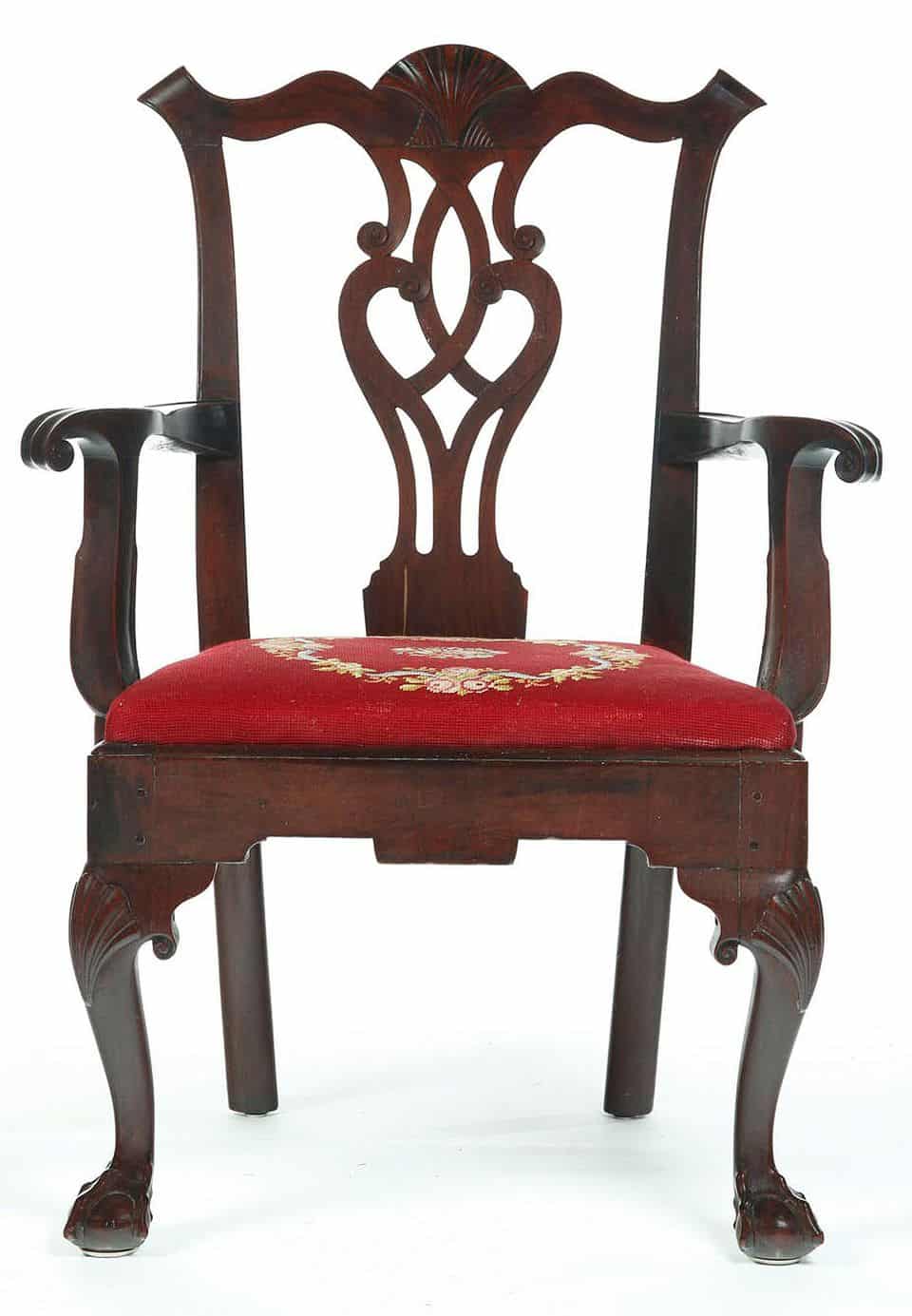
Although details of the beginning of his career still remain unknown, Thomas Chippendale was born in 1718 at Otley, a small settlement in West Yorkshire, England. As son of John Chippendale, who was a carpenter, and his first wife Mary, Chippendale came from a family who had long been in the wood processing trades and probably continued the family business after receiving his basic training from his father. His wife, Catherine Redshaw, and him were married at St George’s Chapel on 19 May 1748 in a ceremony that was considered very fashionable at the time, and had five boys and four girls.
After leasing a house in Conduit Court in 1754 Chippendale moved to 60–62 St. Martin’s Lane in London, where the family company operated until 1813, for almost 60 years, until his son, Thomas Chippendale (Junior), was evicted for bankruptcy.
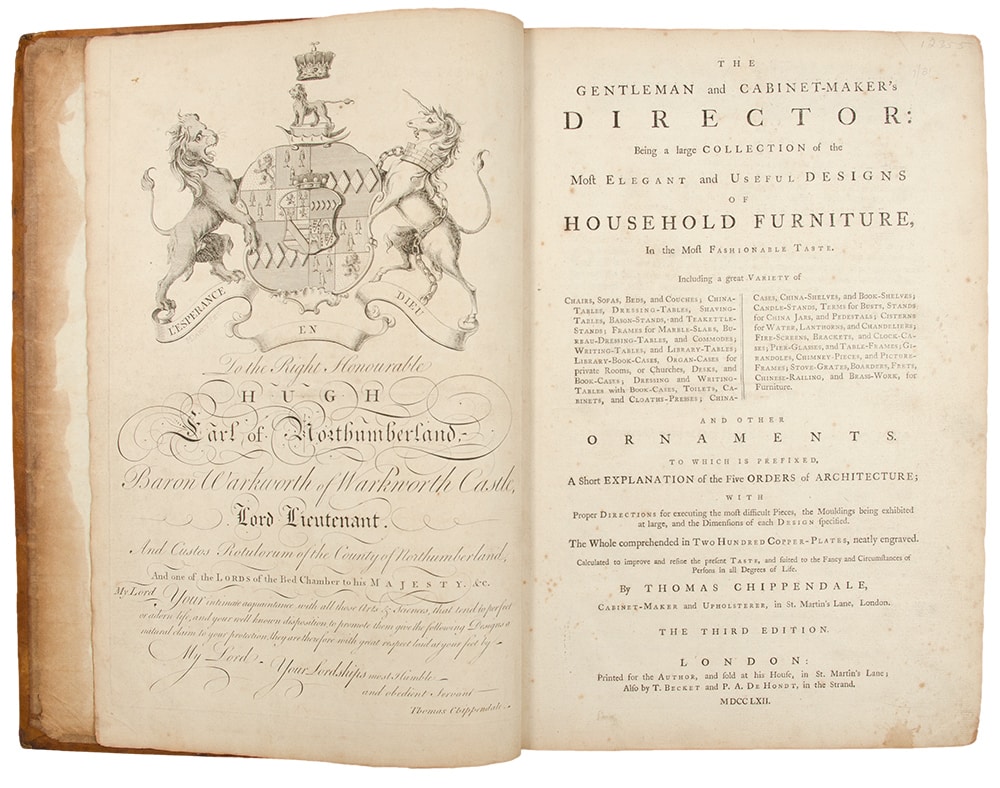
Thomas Chippendale had an eye for business and was a status seeker and self-publicist. He was aware of the importance of public image and self promoting in business. This resulted with the publication of the Gentleman and Cabinet-Maker’s Director in 1754, a collection of popular English furnishing design templates and one of the very fundamental books for furniture design. In it Chippendale revised current designs to the popular fashion of the middle of the 18th century. Everyone from sellers to furniture makers ran to purchase it, forming a dignitary name for Chippendale . And the Director had such a great influence that the name Chippendale is very often widely correlated to all furniture from the middle of the 18th century. After it, two reprints followed, a virtual reprint in 1755 and finally a revised and enlarged edition in 1762, by which time Chippendale’s embellished blueprints began to show signs of Neoclassicism
The Director was created for Chippendales well standing clients as a inventory of his work from where they could choose individual elements for their furniture, which would then be hand made for them in his production store. It consisted of 161 plates, imitating many elements of the Rococo, Chinese, Gothic and Neoclassical design. However, Chippendales work wasn’t limited to furniture design. As a gifted man, he was prepared to design and provide wallpapers, carpets, fire grates, decorative elements, chimney pieces, even complete room layouts. At the top of its success the Chippendale firm was functioning like a modern interior designer working with other professionals and engaging with the task of fully decorating and furnishing rooms or whole houses, once the main construction was finished. Chippendale often took on substantial commissions from elite clients. Twenty-six of these commissions have been identified.
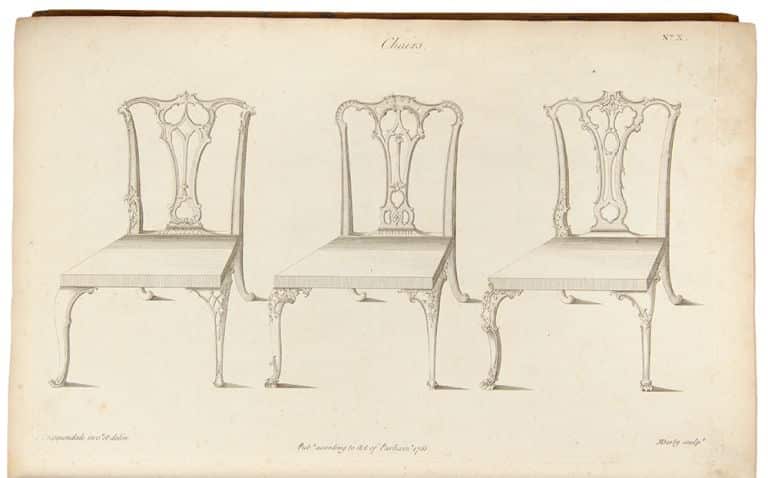
The material used for the most exquisite Chippendale style pieces was mostly mahogany, brought from the West Indies. Walnut, cherry and maple or veneers were used sometimes on less valuable furniture, but were not typical for the Chippendale style. Instead solid wood and rich brocades, velvets, and damasks were used to accommodate the refined pieces. Following versions often fused many different types of woods, and generally have a dark finish to imitate older styles.
In Antiques 101 by Frank Farmer Loomis IV, he states that although Chippendale “appreciated the long-established Queen Anne style, he realized that innovative designs kept sales flourishing.” This resulted with him creating a hybrid style by blending over-the- top Rococo style with the Gothic and Chinese styles. The new style evolved from the then widely famous Queen Anne style. A lot of Chippendale pieces have the Queen-Anne style cabriole leg. The basic Chippendale style has six different style legs:
- The lions paw (ending in lions paw shape foot)
- The ball and claw
- The Late Chippendale (a square leg with a square foot)
- The Marlborough (a simple square leg)
- The club ( a simple round foot)
- The spade (a tapered round leg often with a square or trapezoid foot)
The lions paw, the club and the ball and claw were based on the cabriole shape ( a stylized serpentine style with a characteristic foot on the end). The ball and claw was often incorporated by American cabinet makers as it was shaped like a eagle talon holding a ball referencing the popular symbol of the eagle. Chippendale’s Gothic and Chinese influenced designs had straight or tapering legs, tracery carving and fret and lattice work.
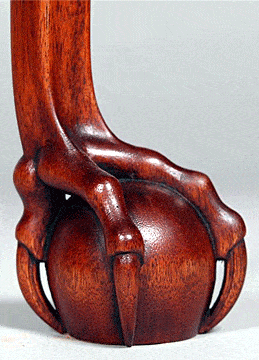
Image via Theantiquesalmanac.com
Although famous for its legs and feet design this can only provide a good base when identifying Chippendale pieces, a lot of fine pieces of furniture have been associated with Thomas Chippendale, but valid pieces are rare. Chippendale never used a maker’s mark, so the only way of verifying his origin is to find one of his original bills, usually hidden among estate papers, or similar documents.
Even when being able to verify with certainty that a furniture piece is from a Chippendale’s workshop, it’s absurd to say with certainty that he worked on the furniture himself. As the company grew with success most of the work was executed more often by Chippendales workmen, rather than Chippendale himself.
However, one of the certain features of the 18th century Chippendale pieces are its aberrations. Cabinetmakers did all of the work by hand thus it can’t match the rigorous perfection work executed by machines. According to John Nye, known as the director of the American furniture department in Sotheby’s in New York, when reviewing a piece of Chippendale furnishing to conclude its age, collectors should look at the joints closely. Joints done by hand will have tiny irregularities and even may show sings of tool marks as well. Other features such as the use of the finest of fabric, top railings on chairs in yoked shapes, intricately pierced and carved arms and sides of chairs and Shell motifs carrying over from the Queen Anne period, also can be features to help distinct the original Chippendale pieces.
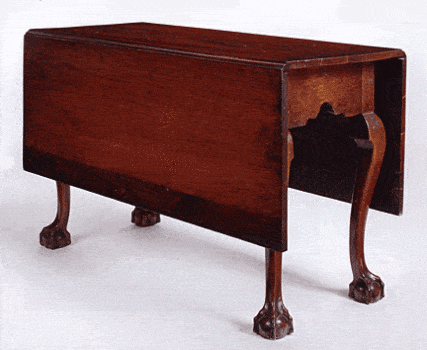
Many imitations of the Chippendale style were made around 1900 in the late-Victorian period when it was practised to get a hold of a refined piece of furniture or decorative object and then have it copied at a lower price to increase its number. While these are also antiques, often produces by hand as well, but in comparison to the original, don’t have the elegantly crafted details found in early Chippendale style pieces, nor do they reach the demanding value of true period furniture. Additionally, the replicas were made of younger mahogany which doesn’t have the density of the slow-growth wood used with the original pieces and is grainier as well.
The impact of the Chippendale style is still broadly found in formal furniture construction and manufacturing including the use of cabriole legs and ball-and-claw feet. And even though, on more than one occasion, Thomas Chippendale had to fight for the fee on his commissions, today his designs command immoderate prices.
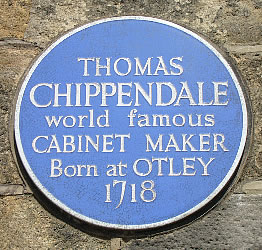
Image via Wikipedia.com
The world renown Chippendale Society has been founded in England in 1963 and owns today an important collection of furniture and documents, often on display at Temple Newsam House, Leeds, England.



Do you sell individual Maitland Smith dining room chairs with straight legs ( no ball feet)? How much are they? I’m missing one of the six chairs for my dining room table that was bought by my mother 60 years ago.
I’m afraid we don’t sell chairs Marlon but from what our research, Maitland Smith still produces furniture today, might be worth a shot to contact them directly and tell them your story and need.